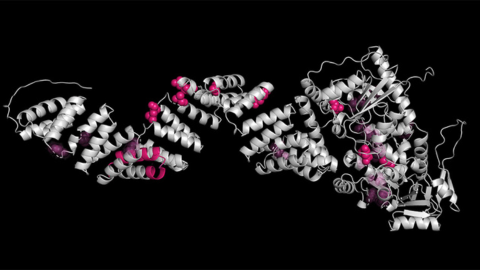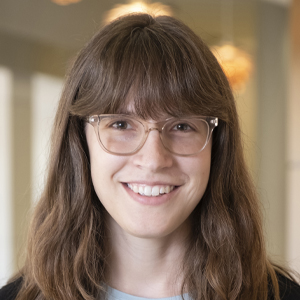Academic job exploration:
the core facility manager
This week I wanted to focus on a job that’s outside the professor track but still in the heart of academic research: the core facility manager. To learn about what this job entails, I spoke with Theresa Swayne, the manager of the confocal and specialized microscopy core facility at Columbia University. This facility has an assistant manager too, Laura Munteanu. The two jobs of manager and assistant manager are similar, and here, for simplicity, I focus on the manager position, though most of what we discuss here is also applicable to the assistant manager position.
I first met Theresa when I used the microscope facility while earning my Ph.D. and was very clueless about how to use the equipment. If the microscope I needed to use was not set up exactly like it was the time before, I’d be completely lost, and Theresa was always there to help get me going. She has since become a good friend that I’m very grateful to have in my life!

The core and the core manager
“Do all your readers know what a core facility is?” Theresa asked me when we spoke by phone on a recent morning. This question reveals her big-picture mind, which, we’ll see later, serves her well in her job.
I was ready to jump in and ask her details about the job, while she remembered to make the article accessible to everyone, a good core manager approach!
“The idea of the core is to provide centralized equipment and services for researchers,” she explained. “The way we describe it is: to provide access to equipment and expertise that would be too expensive or too complex for a single lab to obtain and manage on its own.”
A core, then, can provide expensive complex equipment to entire departments or universities. To make this service feasible and useful, people with the necessary skills must run the core.
“First of all, my job is to keep the equipment running,” she said.
The facility has seven microscopes, including confocal, two-photon and super resolution, and various tech to go with each one. Every lens, bulb, mirror, laser, piece of wiring and tubing must be kept in running order. Ordering supplies and contributing to grand preparation also falls to the manager. But that is nowhere near the whole job.
“My job is also to let the users get the most out of the equipment,” she explained. Helping researchers get the most out of the equipment can also include big-picture things that come from sitting down with researchers: discussing their projects, determining what questions they want to ask and picking the right equipment that will get the answers they are looking for.
Each microscope has strengths and weaknesses, and Theresa can help figure out what’s best. For example, if a researcher is looking for the highest resolution possible, is concerned about having very low signal, really wants 3D images or is looking to take live cell time lapses, Theresa can pick the equipment best suited and then train the researcher. Helping a researcher get the most out of the equipment can also mean technical help, troubleshooting, training and answering questions.
How the manager fits into the academic space
“This is a position that doesn’t fit into the standard academic ladder,” Theresa said, “and academic institutions are still figuring out how we fit into the scientific job category. We’re definitely more than technicians, but we’re not faculty.”
Most managers of core facilities have Ph.D.s. (Both Theresa and Laura do.) The training is helpful from the standpoint of gaining a deep knowledge of the techniques and equipment used in the core. Also, Theresa points out, “The best use of the equipment really starts with understanding the science, how to tackle the questions, and understanding priorities and constraints that scientists work under.”
Most core facilities have a director, who is usually a principal investigator with their own lab (typically a lab that uses the equipment in the core). The PI is the person directly responsible for obtaining grants, though the manager often helps in the preparation.
A day on the job
A typical day in the core has no set schedule, Theresa said.
“I spend a little time taking care of the equipment, but most of the time I’m helping people at different stages of their projects,” she said.
The different stages could mean anything from chatting about the science and figuring out what equipment is best to writing a letter of support for a grant.
“A few people are ready to use the equipment for the first time, so I might do some training," she said. "Or people who have already been trained have little questions come up. In general, I enjoy that every day is different.”
Qualities of the job
Theresa described several aspects of the job that are important — aspects that people thinking of being a core manager should consider.
You gotta love the technique
“It’s important to really love the technique,” she said. “You’ll be working with it all the time!”
Theresa genuinely loves microscopes and imaging. She worked with various techniques while earning her Ph.D. and most didn’t “sell” her, she said. But imaging, when her project called for that, she loved.
She said that people thinking of getting core jobs should consider if they have an affinity for all of the pieces that go into understanding a technique: historical, current and likely future. For example, she said, “Light microscopy involves optics, physics, and engineering; understanding light interacting with fluorescent tags; understanding biological samples; and proficiency in the software used for analysis.”
She said she’s constantly studying to stay on top of the field and enjoys the learning.
You can work with people
Second, Theresa said that a big aspect of the job is people focused: both teaching/training and just getting to know and interacting with people.
“Learning how to speak and write clearly is really helpful, as is letting your ego go and being patient,” she said. Theresa acknowledged that many people in these jobs haven’t had formal teaching training (she had only been a teaching assistant a bit before starting the job), but that the skills of listening, patience and speaking clearly can be incredibly useful.
In addition to teaching, just getting to know people and understanding their work to optimize their use of the microscopes is a big part of the job.
She said she enjoys working with scientists from all over the institution. “I felt like my world opened up,” she said, describing when she started in the core and met people working on all different projects.
She now knows people from all across the campus and can often connect researchers for collaborations.
“That’s one of the best things. When a lab branches out into a new area, they might not know a lot about that area,” Theresa said; she enjoys being able to connect researchers to help each other.
You enjoy solving problems
Third, core managers are problem solvers. These problems vary, from big scientific problems and questions to smaller technical questions about the scopes or their images.
“I know how hard researchers are working," Theresa said, "and, if I can save them time, I love that.”
Theresa’s ability to get a handle on new research quickly is helpful here. She has learned to ask key questions to get an understanding of new topics and then assess what needs to be done.
You are happy to not lead your own research
Lastly, core managers don’t typically carry out their own research projects. This is something to consider seriously. People don’t typically move from core manager to PI, for example, though Theresa acknowledged that the jobs vary quite a bit from institution to institution, and it’s not impossible.
Not being solely in charge of a project was a great positive to Theresa, who, as described above, loved being a problem solver and working with others on their questions.
“I’d rather be involved in many projects than just have sole responsibility for one,” she said. “If I’m in one project, I can start to feel bogged down. I’m happiest when I can let the main researcher tell me about their project, and I can look at it with fresh eyes. Focusing on one problem for months or years doesn’t work as well for me.”Bummers of the job
When I asked her if there was anything she didn’t like about her job, she said the only thing that is a real bummer is when she has to reprimand people. Sometimes researchers go over their allotted time and cause trouble for others waiting to use the scope. Sometimes people don’t quite treat the equipment as well as they should.
While she doesn’t enjoy this aspect of the job, Theresa said she approaches it with a good attitude, reminding people that we all want things to be working well. She said she tries to prevent these situations from coming up by checking in on users frequently.
Future of the facility
I also asked Theresa what will happen in the core when people begin to return to work post-pandemic.
“A lot of what goes on is solitary, one person per microscope. We’re spaced out,” she said, so social distancing won't be hard in those cases.
The problem then is trainings, since those have typically been in person and have required interactions. Some facilities around the country are making online trainings with videos or Zoom. It’s not clear what will end up being most effective in the end.
It will be good to get back, she said, but of course it will be challenging to adjust to the new way of doing things.
Enjoy reading ASBMB Today?
Become a member to receive the print edition four times a year and the digital edition monthly.
Learn moreFeatured jobs
from the ASBMB career center
Get the latest from ASBMB Today
Enter your email address, and we’ll send you a weekly email with recent articles, interviews and more.
Latest in Careers
Careers highlights or most popular articles

Upcoming opportunities
Friendly reminder: May 12 is the early registration and oral abstract deadline for ASBMB's meeting on O-GlcNAcylation in health and disease.

Sketching, scribbling and scicomm
Graduate student Ari Paiz describes how her love of science and art blend to make her an effective science communicator.

Embrace your neurodivergence and flourish in college
This guide offers practical advice on setting yourself up for success — learn how to leverage campus resources, work with professors and embrace your strengths.

Upcoming opportunities
Apply for the ASBMB Interactive Mentoring Activities for Grantsmanship Enhancement grant writing workshop by April 15.

Quieting the static: Building inclusive STEM classrooms
Christin Monroe, an assistant professor of chemistry at Landmark College, offers practical tips to help educators make their classrooms more accessible to neurodivergent scientists.

Unraveling oncogenesis: What makes cancer tick?
Learn about the ASBMB 2025 symposium on oncogenic hubs: chromatin regulatory and transcriptional complexes in cancer.

